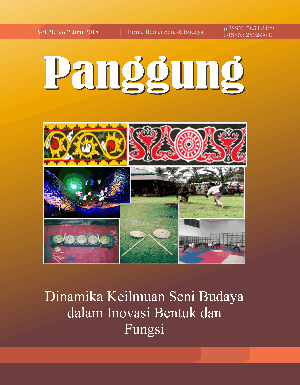Tubuh Tari Indonesia Sasikirana Dance Camp 2015-2016

Abstract
ABSTRACT
Sardono W. Kusumo, an Indonesian dance master and choreographer once stated that the way to understand dance should start with the study of embodiment before moving to the study of dance in its performative art form. A dancer should be able to process his/her dance by recognizing the complexity of the body and the nerves system and muscles through a creative process, resulting a confident work of performing arts. Through a historical perspective and based on the theory of embodiment, this article tries to convince that dance needs to stand as a repository of cultural memories and therefore is able to represent the habitus of Indonesian dancers. A comprehensive evaluation of the development of Indonesian Dance Festival (IDF) and Sasikirana Dance Camp (SDC) is used as real evidences of how this form of the arts must put forward physical approaches first before creating a reasonable discourse to the acts.
Keywords: Dance Camp, choreography lab, embodiment
ABSTRAK
Sardono W. Kusumo, maestro dan penata tari Indonesia mengungkapkan bahwa untuk memahami tari harus dimulai dengan mempelajari ketubuhannya sebelum bergerak pada studi tentang tari dalam aspek performatif pertunjukannya. Seorang penari harus mampu memahami dan mendalami kompleksitas tubuh bersamaan dengan system syaraf dan otot tubuhnya sebagai proses kreatif untuk kepercayaan tubuhnya dalam pertunjukan. Melalui perspektif sejarah dan bersumber pada teori ketubuhan, tulisan ini bertujuan menyakinkan para penari, bahwa tubuh tidak hanya sebagai tempat agensi kultur masa lalu, sehingga lebih meyakinkan bahwa tubuh tari Indonesia berakar dari habitatnya. Evaluasi komprehensif atas kegiatan Indonesian Dance Festival (IDF) berserta Sasi Kirana Dance Camp (SDC),dijadikan sebagai pembuktian tentang pentingnya pendekatan fisikal untuk ketubuhan penari sebelum merujuk pada pendekatan bidang seni lainnya.
Kata kunci: Dance Camp, lab koreografi, tubuh tari
References
- Bourdieu, P. (1977). Outline of a Theory of Practice. Cambridge: Cambridge University Press.
- Chattarjee, A. (2004). Butting Out, Reading Resistive Choreographies Through Works by Jawole Willa Jo Zollar and Chandralekha. Middletown, Connecticut: Wesleyan University Press.
- Forsythe, W. (2011). And the Practice of Choreography. London: Routledge.
- Foster, S. L. (2011). Choreographing Empathy: Kinesthesia in Performance. London: Routledge.
- Noland, C. (2009). Agency and Embodiment: Performing Gestures/Producing Culture. London: Harvard University Press.
- Murgiyanto, S. (2008). Menulis Kritik Seni dalam Krisis Kritik, Seperempat Abad Pasca Gendhon Humardani. Surakata: ISI Press Surakarta.
- _______ . (2005). “Membaca Sardono: Penari-Penata Tari, Pejalan dan Pemikir Budaya.” Tiga Jejak Seni Pertunjukan Indonesia. Editor: Tommy F. Awuy. Jakarta: Masyarakat Seni Pertunjukan Indonesia.
- _______ . (2004). Tradisi dan Inovasi, Beberapa Masalah Tari di Indonesia. Jakarta: Wedatama Widya Sastra.
- Supriyanto, E., Haryono, T., Soedarsono, Moergiyanto, S. (2014). “Empat Koreografer Tari Kontemporer Indonesia Periode 1990-2008”. Panggung, 24 (4), 335-350.
- Supartono, T. (2016). “Penciptaan Teater Tubuh”. Panggung, 26 (2), 208-221.